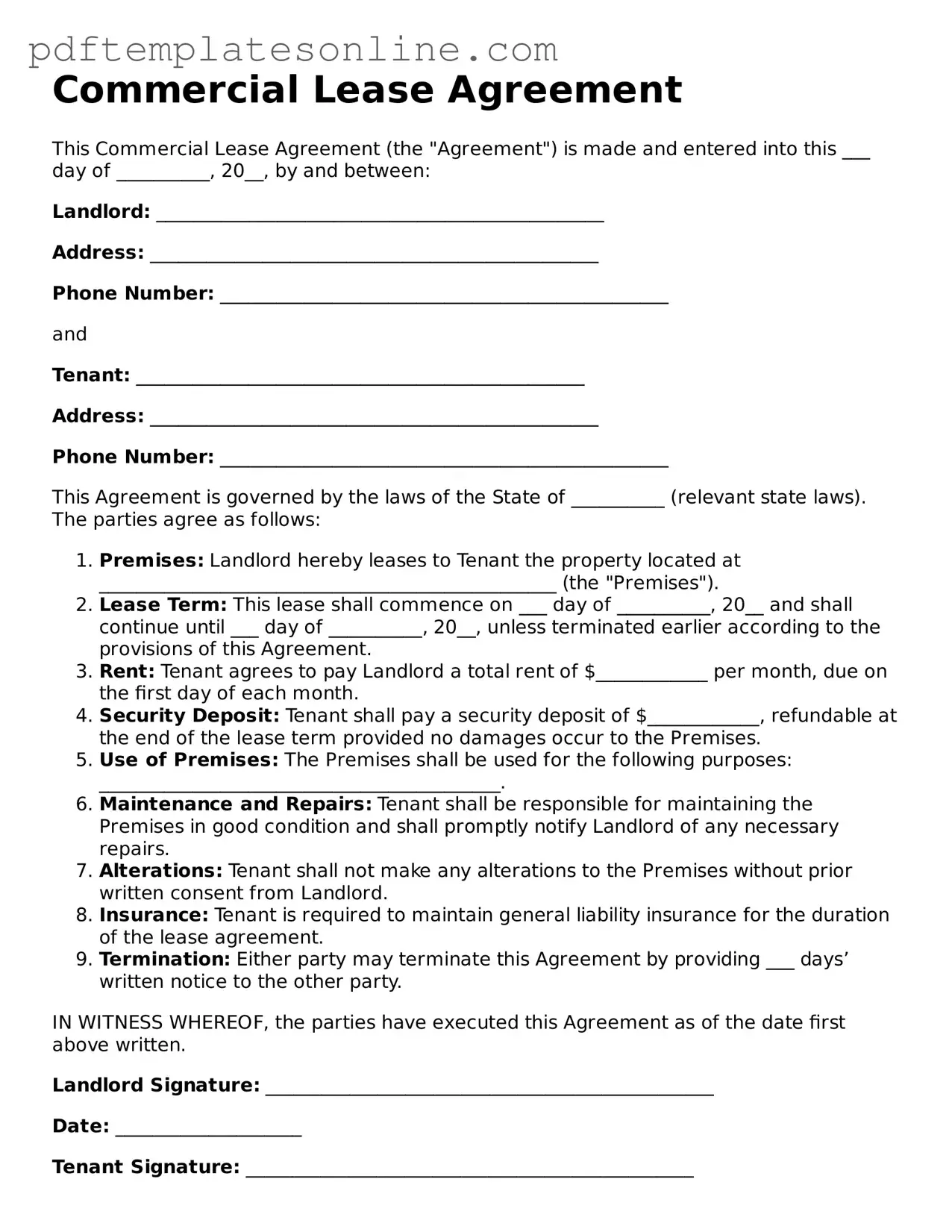Filling out a Commercial Lease Agreement can be a complex task, and many people inadvertently make mistakes that could lead to misunderstandings or legal issues down the line. One common error is failing to read the entire document thoroughly. This can result in overlooking important clauses or terms that might significantly affect the lease. It's crucial to take the time to understand every section of the agreement.
Another mistake often made is not specifying the lease term clearly. Whether it’s a short-term or long-term lease, not stating the exact duration can lead to confusion. Both parties should agree on the start and end dates to avoid potential disputes in the future.
Some individuals neglect to clarify the rent payment details. It's important to include the amount of rent, the due date, and the method of payment. Vague language regarding payment can lead to disagreements about when and how much is owed, which can strain the landlord-tenant relationship.
Additionally, people sometimes forget to address maintenance responsibilities. The lease should clearly outline who is responsible for repairs and maintenance. If this is not specified, tenants may find themselves liable for repairs they assumed were the landlord's responsibility.
Another common oversight is not including a clause for renewal options. If a tenant wishes to extend their lease, having a clear renewal process in the agreement can save time and prevent misunderstandings later on. Without this, tenants may find themselves scrambling to negotiate terms at the last minute.
Some individuals also fail to discuss permitted uses of the property. It’s essential to define what activities can take place within the leased space. If this isn’t addressed, tenants may inadvertently violate the lease by using the property for unauthorized purposes.
Moreover, neglecting to include a security deposit clause can lead to disputes. The agreement should specify the amount of the deposit, conditions for its return, and any deductions that may apply. Clarity in this area can prevent frustration and confusion when the lease ends.
Lastly, many people overlook the importance of signatures. An unsigned lease is not legally binding. Both parties must sign the agreement to ensure that it is enforceable. It’s a simple step that can often be forgotten in the rush to finalize the lease.
